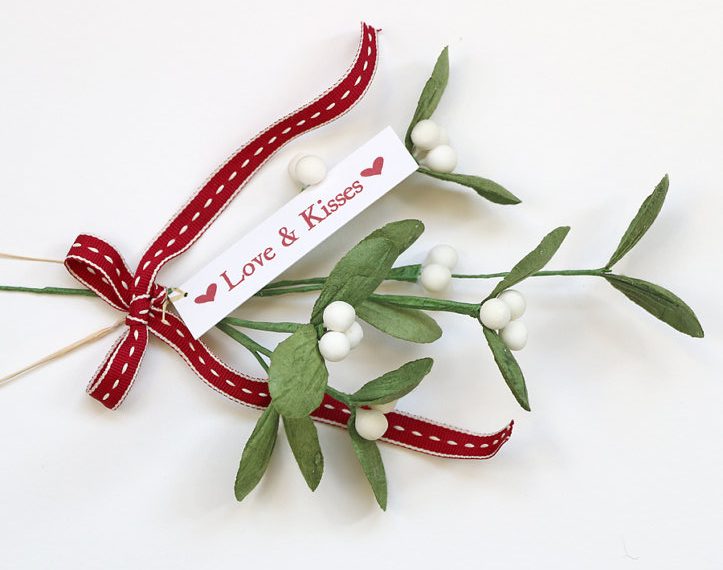History of Mistletoe Decoration and Tradition
Mistletoe is one of the many classic symbols of Christmas. Find out more about it’s history and the origin of the Kissing tradition in this article. From Druid priests to Justin Bieber, we’ve revered this winter evergreen plant for hundreds of years. But how did it come to mean good luck, fortune and happiness for those who kiss beneath it?
 (Christmas Decoration via Etsy Shop PaperTreeUK)
(Christmas Decoration via Etsy Shop PaperTreeUK)
Historical uses of Mistletoe
Mistletoe was used by Druid priests 200 years before the birth of Christ in their winter celebrations. They revered the plant since it had no roots yet remained green during the cold months of winter.
The ancient Celtics believed it to have magical healing powers and used it as an antidote for poison, infertility, and to ward of evil spirits. The plant was also seen as a symbol of peace, and it is said that among Romans, enemies who met under mistletoe would lay down their weapons and embrace.
Scandanavians associated the plant with Frigga, their goddess of love, and it may be from this that we derive the custom of kissing under it. Those who kissed under the mistletoe had the promise of happiness and good luck in the following year.
Modern Uses
Since it already had connotations with fertility, happiness and friendship. As with many ever-green plants, the British started incorporating them into their Holiday Decorations and by the mid-Nineteeth century (again, Victorian England, the birthplace of modern Christmas), many household hung the “Kissing Boughs/Balls” made of the evergreens, including holly and ivy, that we are familiar with today. Although the ball shape is most traditional, there are many designs for artificial decorations.
[amazon_link asins=’B01LD813NU,B01MSJ6ISF,B01HQTBM4U,B017KXD844′ template=’ATCAmazon’ store=’allthingsch0e-20′ marketplace=’US’ link_id=’250a3549-6bc3-11e7-910a-dbbaec34842d’]


Leave a Reply